Our Shop
Our Shop
Organ building is a team effort, calling on the talents of design experts and skilled artisans to produce elegant musical instruments that last for generations. The depth of knowledge and experience in the Reuter shop is one of our greatest assets. Half of our employees have been with the company for at least 20 years. The following description of our shop areas and operations illustrates many aspects of the art of organ building.
Engineering
At the Reuter Organ Company, the success of each installation begins with the work of our team of engineers. As a custom specification is developed to meet our client's musical needs, the engineering department creates visual renderings and mechanical plans for each instrument based on the architectural and acoustical properties of the installation site. Whether the project is a completely new instrument or renovation of an existing one, no construction detail is overlooked. Every organ is designed to blend with and enhance its surroundings, ensuring that our reliable instruments look as great as they sound.
The engineering department also houses thousands of archival files and drawings of projects that have been completed over the past 100 years.
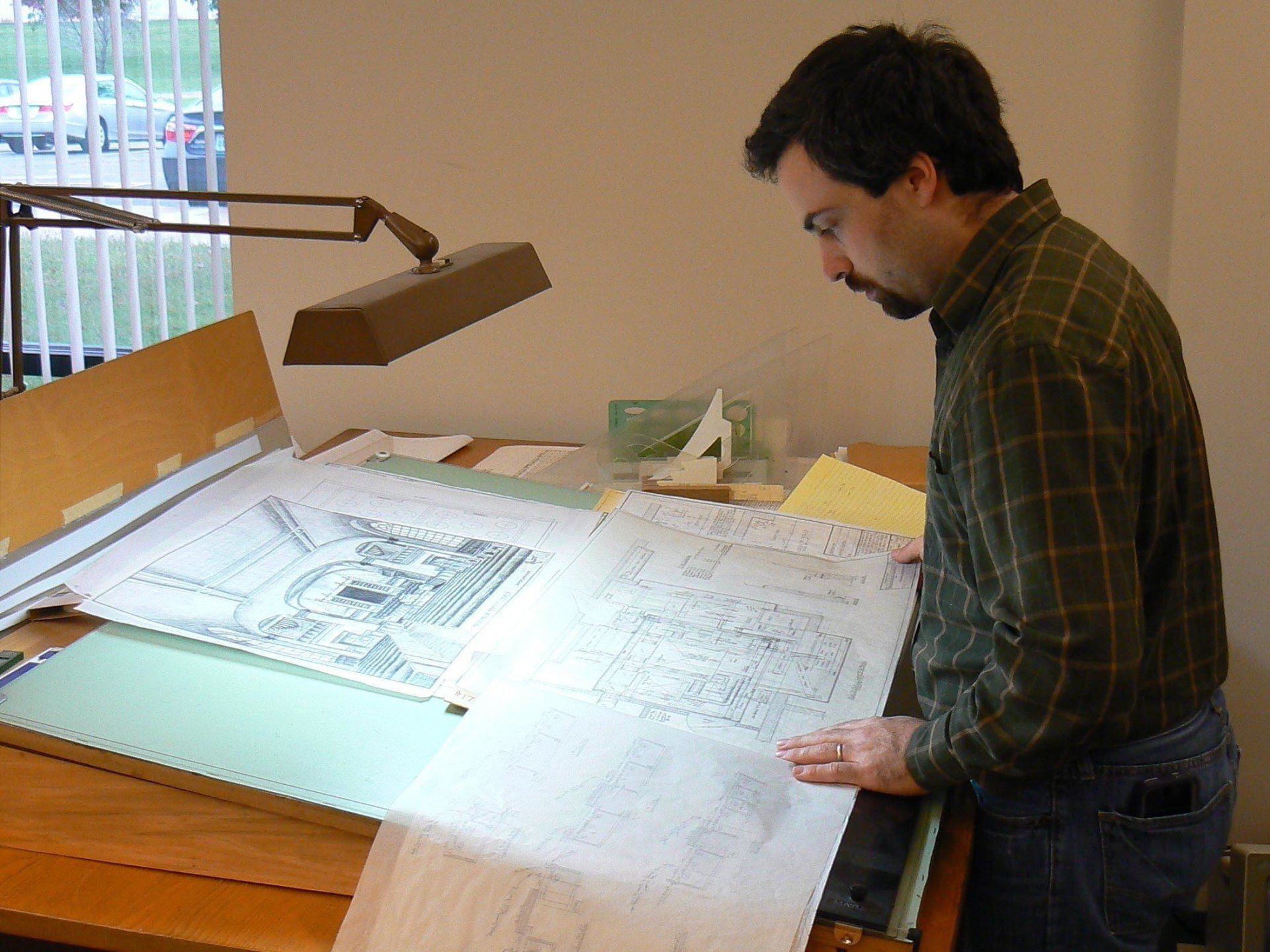
Milling
A variety of hardwoods are stored in the climate-controlled environment of the Reuter mill room, including poplar, red and white oak, walnut, mahogany, rosewood, and ebony.
The space is designed for efficient preparation of rough lumber as specified for use in other shop areas.

Casting
One of the predominant alloys used for making organ pipes is composed of a mixture of tin and lead. These two metals are melted together and cast in flat sheets on a specially designed table. Because the two metals have different melting points, the resulting alloy takes on a spotted appearance as it cools, commonly known as 'spotted metal.' The blocks, or bases, of reed pipes, are also cast in this room.
Spotted metal is cast several times a year. The sheets are subsequently aged for at least six months before they are processed in our one-of-a-kind metal planer, designed by Reuter engineers and built in our machine shop, to achieve a uniform thickness.

Pipemaking
Each and every pipe of a new Reuter pipe organ is custom made on-site in our pipe shop. Tin, zinc, or spotted metal is cut to specification and then carefully rounded into various cylindrical and conical shapes using patterns and techniques shaped through long experience. These elements are then precisely soldered together to form pipes.
Copper, selected for its superior strength and used to construct many of our reed pipes and larger flue pipes, receives slightly different treatment and is welded rather than soldered.
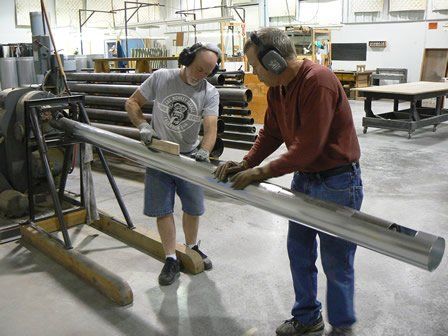
Voicing
The pipe shop builds the pipes, and then the voicers teach the pipes to sing!
The members of our voicing team are all professional musicians who are proficient on wind or keyboard instruments, and work to achieve the wide range of expression, color, and warmth that is characteristic of the Reuter sound. They meticulously prepare every pipe for every organ, so that each can take its place in a larger whole — often an instrument with thousands of pipes — and produce balanced ensemble sound with consistent speech and tone.

Windchests
Organ pipes require precise wind systems for optimum musical results. The pipes are arranged on windchests, which have an intricate system of channels and valves to provide the proper amount of air to each pipe at just the right time, ultimately controlled by the organist at the console. Reuter uses both electro-pneumatic and slider chests in its organs. Air is supplied by a blower and regulated by a series of reservoirs to control and maintain pressure.
In addition to these components, the chest department produces the handmade leather pouches and valves that are an integral part of the playing mechanism, as well as Reuter's unique aluminum-clad, ball-bearing swell shades.
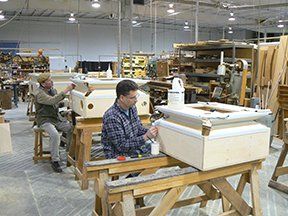
CNC Router
One area where Reuter has departed from some vintage woodworking traditions is in our use of the computer numerical controlled router. This complex machine is invaluable in its ability to produce highly detailed, intricate wood designs. Controlled by CAD/CAM files created in our engineering department, the CNC router can produce anything from precision top boards for windchests to decorative panel designs for the case department.

Casework
A part of the art of organ building includes finely finished woodwork. Reuter's experienced craftsmen fashion the organ's cabinetwork, console cases, and benches from a wide variety of premium woods.
Elements in their portfolio range from tall, sculpted organ towers to intricate console details. From time to time, our staff members apply their furniture making skills to create custom liturgical fixtures. Reuter's pedalboards and wood pipes are also produced in this department.

Consoles
After the console shell is constructed in the case department, keyboards, stops, pistons, and computerized control systems are installed in the console department with exacting precision.
Reuter has its own keyboard design, exclusively crafted in our shop. The keys, made from the finest basswood, employ a staggered fulcrum for uniform touch between naturals and sharps, and can be finished with a variety of coverings.
A custom-designed combination action and switching system, built to our specifications by one of several leading manufacturers, complete each instrument.

Finishes
Fine finishes are one of many elements essential for aesthetically pleasing results in instrument making.
On one hand, our wood stains are carefully mixed and applied by hand with time-honored, traditional artistry. On the other hand, a large area of the shop is devoted to spray finishes and is equipped with state-of-the-art equipment.
We use ultraviolet-resistant catalyzed lacquer for our woodwork and have taken high-gloss metallic paints developed for the auto industry and adapted them for use on pipework. Accordingly, we offer a wide palette of beautiful finishes with outstanding durability.
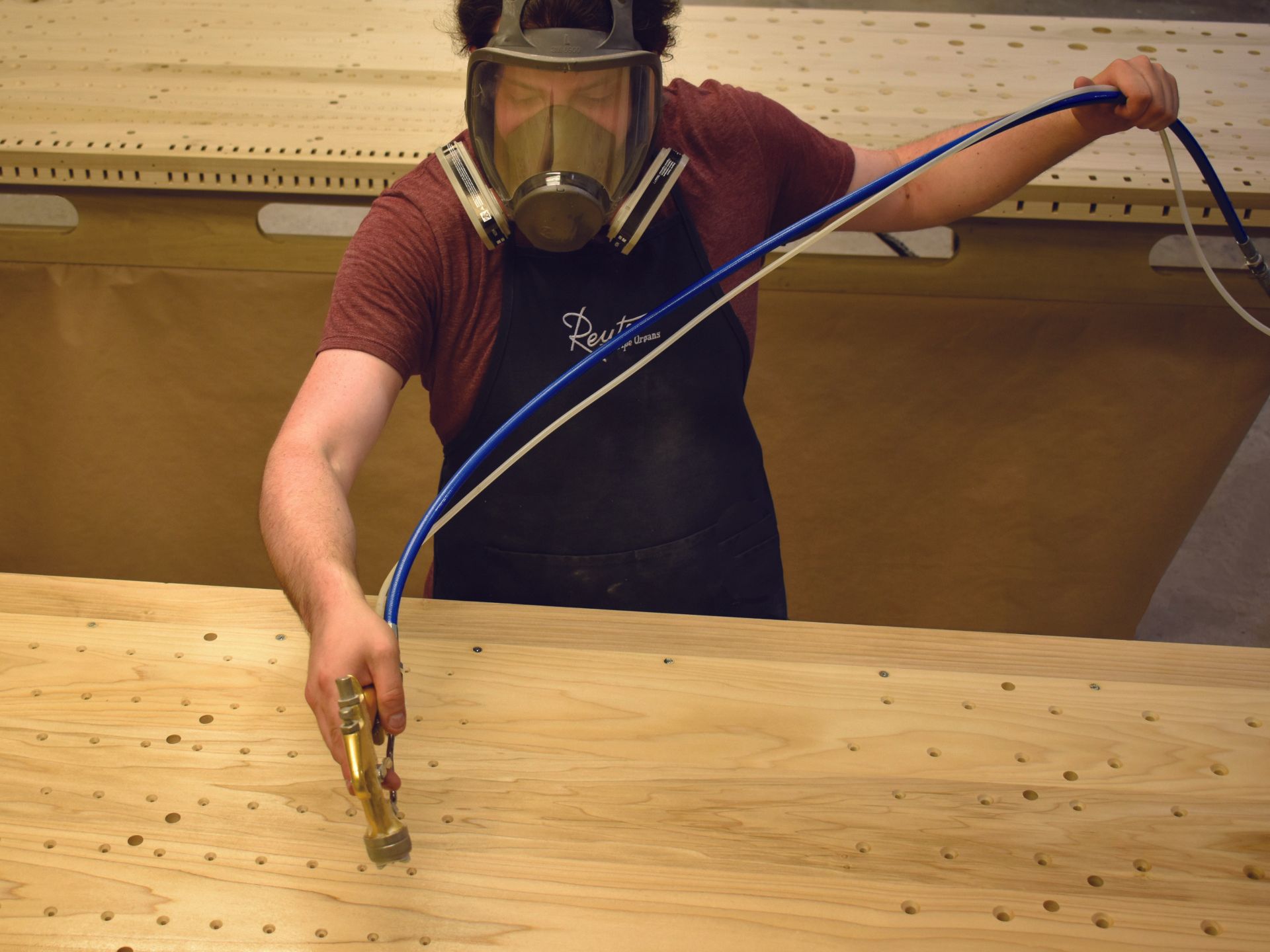
Assembly
The Reuter assembly room is 45-feet tall and has 2,800-square-feet of floor space; big enough to completely assemble and test even the largest instruments — the critical, final phase of preparation before an organ can leave the Reuter facility.
The assembly staff bring together all the components built by the other departments and compile them into a complete instrument. They wire all the windchests and fit them with magnets, valves, and sliders; build the organ frames; install the chests and winding systems; and finally, rack all the pipes.
The organ then undergoes rigorous testing before being very carefully disassembled and packed to reach its final destination.
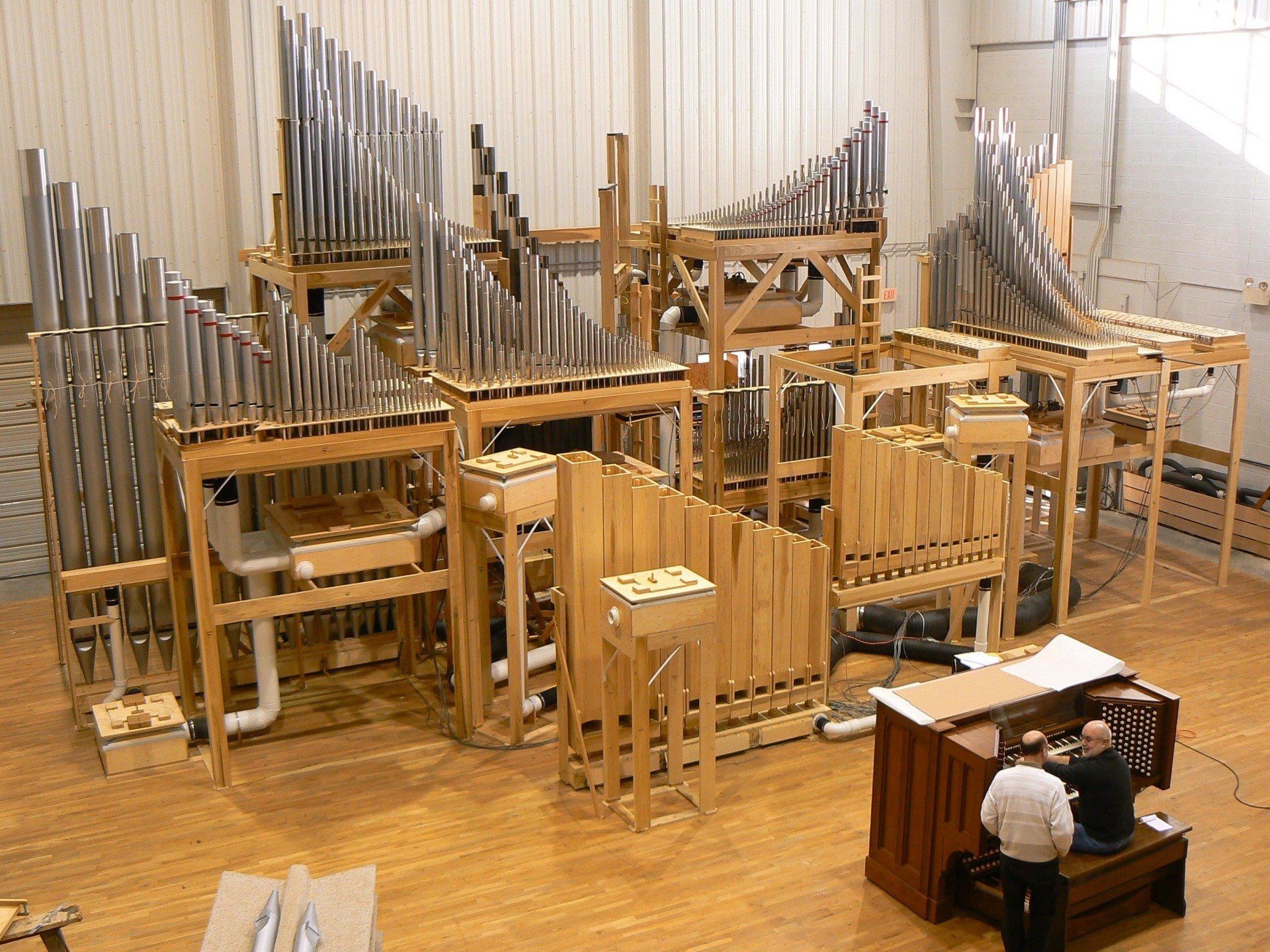
Installation
When the organ arrives at the installation site, a specially selected group of Reuter employees, often with some help from volunteers on site, unload and reassemble the instrument in its new home.
Although the pipes of each instrument have received critical initial voicing while at the shop, the ultimate success of the organ lies in the hands of the tonal finishers, who make final adjustments to each and every pipe for optimum effect in the acoustical environment of the installation site. In many ways, organ stops resemble the instruments in an orchestra, each capable of independent speech but all requiring the artistic skills of a conductor to blend them into a truly musical ensemble.
Tonal finishing is completed under the direction of Reuter executives William Klimas, artistic director, and JR Neutel, president.

On-Site Consultations Available
Call us today.
(785) 843-2622
(785) 843-2622
Very knowledgeable and polite staff.
- Paul J. via Google
CONTACT US
This is a placeholder for the Yext Knolwedge Tags. This message will not appear on the live site, but only within the editor. The Yext Knowledge Tags are successfully installed and will be added to the website.
Hi. Do you need any help?
Privacy Policy
| Do Not Share My Information
| Conditions of Use
| Notice and Take Down Policy
| Website Accessibility Policy
© 2024
The content on this website is owned by us and our licensors. Do not copy any content (including images) without our consent.

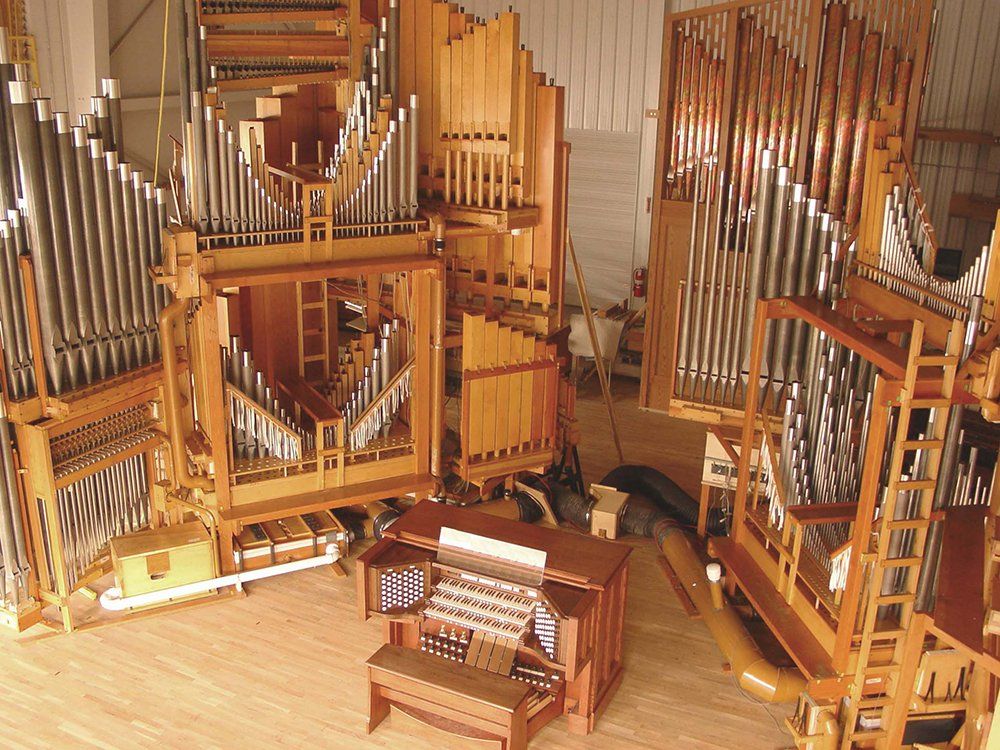
Share On: